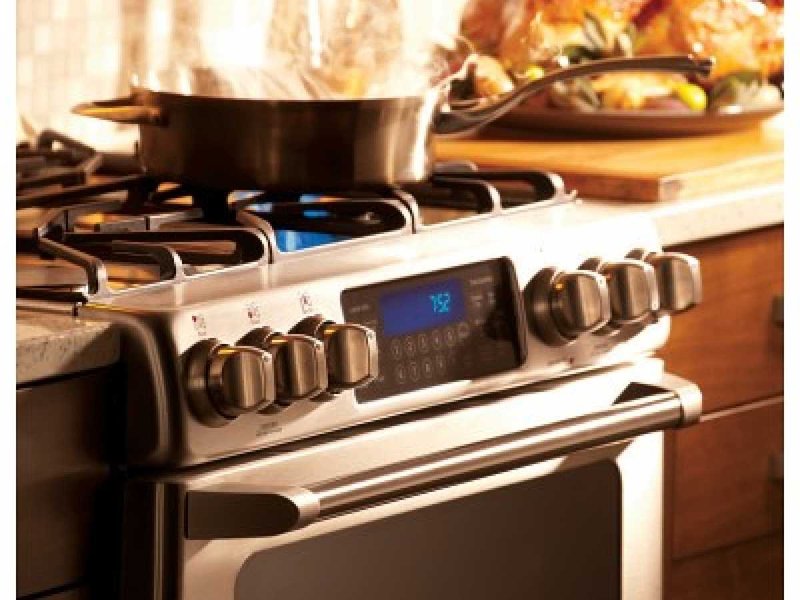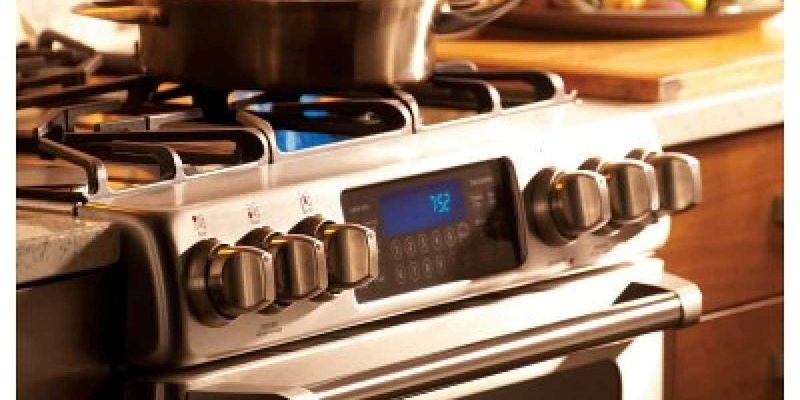
So, what’s going on behind that F1 code? In simple terms, it’s like when your car’s check engine light turns on. It doesn’t mean your oven is broken beyond repair, just that it needs some troubleshooting. The F1 error points to an issue with the oven’s internal components, usually involving sensor or electronic glitches. Understanding these issues doesn’t require a technician’s handbook—just a bit of curiosity and a willingness to learn about what makes your trusty kitchen appliance tick.
In this article, we’ll delve into the heart of what causes an F1 error code in GE ovens and ranges. We’ll explore potential culprits like faulty temperature sensors, problematic control boards, and even power issues. We’ll break down each component and offer easy-to-follow explanations and tips on what you can do about them. By the time we’re finished, you’ll feel more confident tackling and preventing these pesky error codes.
Understanding the F1 Error Code
When your GE oven shows an F1 error code, it’s essentially sending an electronic SOS. But what does this specific code mean? Typically, the F1 error indicates a problem with the oven’s electronic control system. Think of it like your oven’s brain getting a little mixed up—a bit like when your computer freezes for no apparent reason. One common issue triggering this error is a faulty electronic oven control (EOC) board. This board is crucial because it acts like the command center for your oven, ensuring everything works in harmony.
However, the F1 error doesn’t always stem from the control board alone. Sometimes, a malfunctioning temperature sensor might also be the culprit. The sensor’s job is to keep an eye on the internal temperature and relay this information back to the control board. Imagine it’s like a thermometer that’s way off the mark, causing the oven to get confused about how hot it actually is inside. When the sensor fails, it sends incorrect readings, leading to the F1 code.
Another potential source of the F1 error code is power-related issues. This could be as simple as a power surge or an electrical glitch in the wiring. Imagine your oven’s power supply like a steady current of water. If there are sudden spikes or drops, it can mess with the electronics just like a sudden dam opening would alter the flow of a river. Fixing this might just involve checking the power connections or ensuring there’s no electrical interference impacting the oven’s operation.
Troubleshooting the F1 Error
So, you’ve got an F1 error code blinking at you. What can you do about it? First off, don’t panic. A systematic approach can work wonders. Begin by performing a basic reset. Just like rebooting a lagging computer can solve a host of issues, turning your oven off and back on can sometimes clear the error. Unplug the oven or switch it off at the circuit breaker for a few minutes. Then, power it back up and see if the error persists.
If the reset doesn’t work, your next step should be inspecting the temperature sensor. This part can often be found inside the oven cavity. Check for signs of damage or disconnection. If something looks amiss, it might need tightening or replacement. This is akin to checking a battery in a gadget when it stops working—it could be something simple causing the whole system to falter.
When you’ve ruled out an obvious sensor issue, it might be time to consider the control board. If you’re comfortable, you can locate this component and look for visible signs of damage, like burnt spots or loose connections. If this sounds a bit too technical, calling in a certified technician might be your best bet. They have the expertise to handle more complex repairs without risking further damage to your oven.
Preventing Future F1 Errors
Prevention, as they say, is better than cure. Keeping your oven in top shape is all about regular maintenance and a few easy habits. First, ensure that your oven is installed correctly and that the power supply is stable and reliable. Just like you wouldn’t plug sensitive equipment into an unreliable power source, your oven needs a consistent energy flow to prevent glitches.
Regular cleaning can also help maintain your oven’s health. Grease and grime can accumulate and cause sensors to malfunction, much like dust in the wrong place can jam your computer keyboard. Make sure to clean not just the surface but also the oven’s interior components, according to the manufacturer’s guidelines.
Finally, it’s wise to keep an eye on your oven’s performance. Listen for unusual noises, watch for inconsistent cooking results, and monitor for error codes. Catching small issues before they become bigger problems can save you from the hassle of more significant repairs down the line. If you’re ever in doubt, don’t hesitate to reach out to a professional to give your appliance a thorough check-up.
By understanding what the F1 error code is trying to communicate and taking steps to troubleshoot and prevent it, you can extend the life of your GE oven and enjoy trouble-free cooking for years to come.
